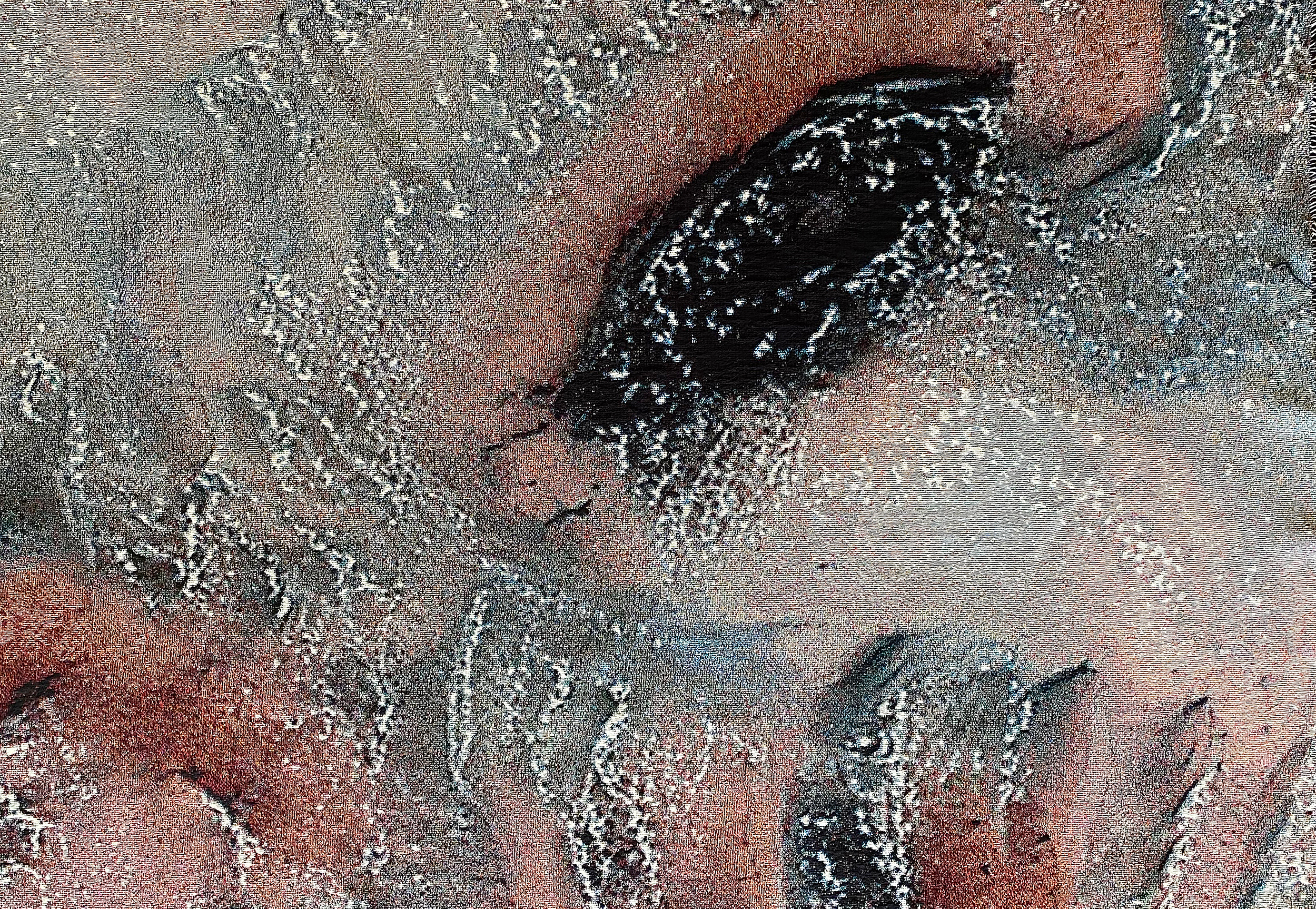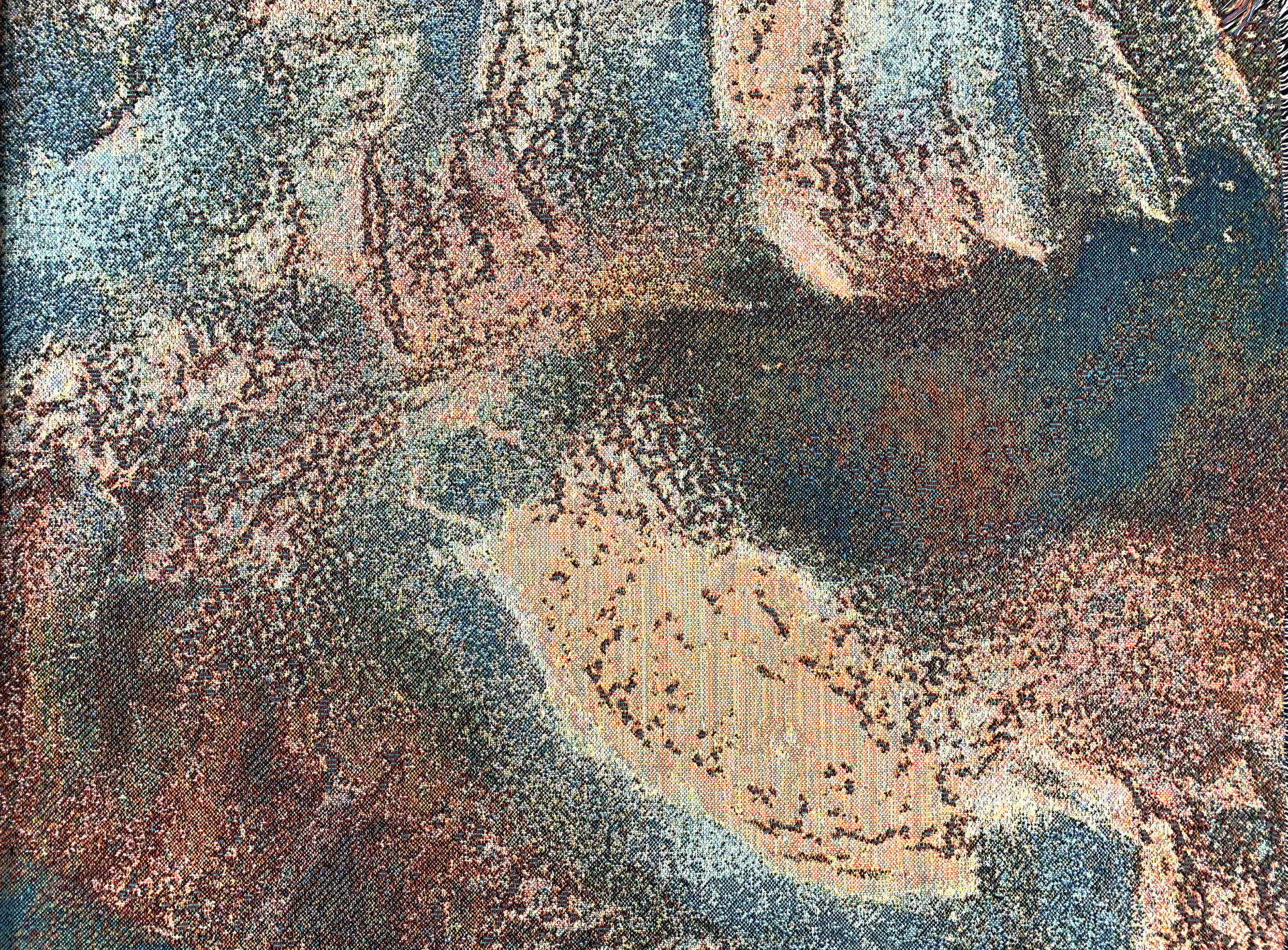ABOVE BELOW

Today, living in a planetary pandemic, life has been reduced to pixels within a matrix observed from a technological remove. Mass migrations into digital space happened overnight with radical compliance to simulation and software, such as virtual gatherings and video conferencing apps. Remote sensing through technological devices replaced our physical interactions as the new standard. From our movements, distances were surveillanced and captured by a biased machine, tracking entire populations from above. In doing so, scaling from distanced proximities and resolutions became part of everyday life—with boundaries and borders trained from hundreds of years of imperialism, and enforced by technology.
Colonialism is rooted in the planetary imagination which fails to account for histories of structural racism based on geologic relations and the violent dispossession of indigenous lands. This resulted in legacies of destructive cartography and mapping now used in machine vision in space. Problems arise when imagining and understanding these places through posthuman computational tools. The construction and meaning of place through technology needs constant addressing to dismantle terrestrial entanglements spread through the galaxy—the geography of space is based on imperialist knowledge production used against black and brown bodies. Pointing outward begins with pointing to ourselves, and to computations of the past and future. Power and construction reside less at the center and more at the edges of geospatial relations.
Machines view Mars first as an abstraction, transforming numerical data and imaging from telescopes and satellites into blown up worlds, then concrete places. Satellite imagery is inherently political from its use on Earth, recognized by machines as a pixel grid of numeric intensity values that inform classification and speculation on physical properties and processes. Each image depends on the number of pixels—each fixed with complexity per pixel, with the pixel being the smallest controllable physical point represented on a screen.
I am engaged with computation and fiber art in relation to the Jacquard loom because of its relationship to image production. The first computer algorithm was written by Ada Lovelace while she observed its capability to weave intricate flowers and leaves. The exchange between imaging and the loom untangle contemporary understandings of mapping by materializing computation.
Similarly, woven geospatial imagery on the Jacquard loom embodies the computer’s earthly origin from cotton thread to pixel and around again—a web of the past and future geographies. AI-generated textiles reveal a tactile connection with the pixels it signifies, tracing its production, operating between reality/artificiality and material/immaterial, and back again.

ABOVE BELOW is a series of textiles using computer code to project and reshape satellite images of ice from the Mars Reconnaissance Orbiter, a spacecraft orbiting Mars, from a neural network based on Earth. Pointing to Mars provides a different perspective and scale for imaging terrains. It operates between signifiers of planetary change, BLUE and RED—the desertification of the Blue Planet and colonizing the Red Planet. BLUE and RED both formed by millions of years of water and climate, now captured from above and below.
The notion of up or down—above or below—dissolves in space, following its reversal. Both sides of the AI-generated Jacquard textile mirror a technological deconstruction coming from and being on Earth. Pixels and boundaries, real and virtual, are distorted and broken, pointing back to Earth’s RED moment—California’s skies resemble a martian planet*.
*This article was written in Southern California while sheltering-in-place from both the COVID-19 pandemic and one the worst fire seasons of California’s history. Over 4 million acres burned in more than 8,200 wildfires.
ABOUT THE CONTRIBUTOR
Sarah Rosalena Balbuena-Brady is an interdisciplinary artist and researcher based in Los Angeles. Her work deconstructs technology with material interventions, creating new narratives for hybrid objects that speak on issues such as AI, aerospace technologies, and decolonial posthumanism. Hybrids function between human/nonhuman, ancient/future, handmade/autonomous to override power structures rooted in colonialism. They collapse binaries and borders, creating new epistemologies between Earth and Space. She is Assistant Professor of Art at UC Santa Barbara in Computational Craft and Haptic Media. Her research focuses on Indigenous scholarship and mentorship in STEAM, she is multiracial Huichol and Laguna Pueblo. As a child she was influenced by her grandfather, F. H. Brady, who worked on mission control for the Voyager program and the Deep Space Network at NASA’s Jet Propulsion Laboratory. She is currently researching with JPL and the Smithsonian NMAI on her LACMA Art + Tech Lab Project, Exit Points.